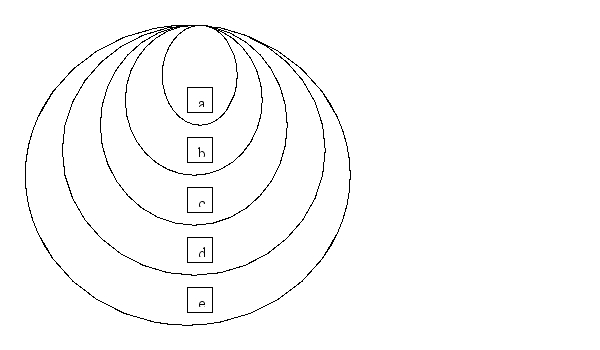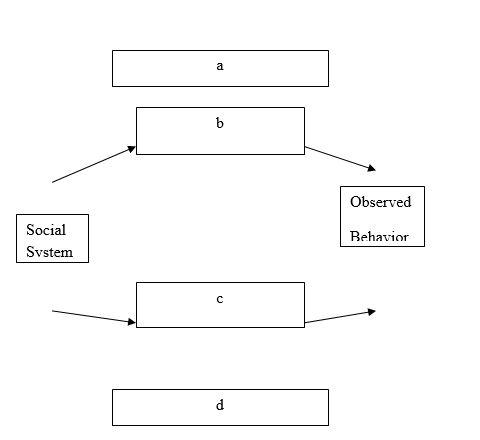Deck 4: A Systems Approach to Organization
Question
Question
Question
Question
Question
Question
Question
Question
Question
Question
Question

Unlock Deck
Sign up to unlock the cards in this deck!
Unlock Deck
Unlock Deck
1/11
Play
Full screen (f)
Deck 4: A Systems Approach to Organization
1
According to social systems theory a school that has dynamic equilibrium is illustrated best by which of the following?
A) Since all children benefit from a solid standards-based curriculum, teachers do not need to make instructional changes even though there are changes in student demographics from last year.
B) At a national conference, the superintendent learns about small learning communities and hires a consultant to work with schools to create them.
C) In a time of turbulent change in the school district, the principal keeps the staff protected by maintaining internal policies and procedures.
D) Faced with mandated changes due to NCLB, the principal asks departments to determine effects of the new requirements on each department and report on how each department will respond.
E) Both a and b are correct.
A) Since all children benefit from a solid standards-based curriculum, teachers do not need to make instructional changes even though there are changes in student demographics from last year.
B) At a national conference, the superintendent learns about small learning communities and hires a consultant to work with schools to create them.
C) In a time of turbulent change in the school district, the principal keeps the staff protected by maintaining internal policies and procedures.
D) Faced with mandated changes due to NCLB, the principal asks departments to determine effects of the new requirements on each department and report on how each department will respond.
E) Both a and b are correct.
D
2
Describe the meaning of the following social systems theory equation: B = fR · P).
The equation means that observed behavior is a function of an individual's role and his/her personality.
3
One of the main tenets of the sociotechnical systems theory described by Robert Owens and Carl Steinhoff is best illustrated by which of the following.
A) A significant change in one subsystem will affect variables in one or all subsystems. b. The leaders should focus primarily on the human or people subsystem which is important to insure quality in all subsystems.
C) Well-structured sociotechnical systems will prevent the larger societal system from affecting the organization.
D) Decisions about changes in the subsystems should be made by those individuals who have primary authority and skill within that subsystem.
E) Both a and c.
A) A significant change in one subsystem will affect variables in one or all subsystems. b. The leaders should focus primarily on the human or people subsystem which is important to insure quality in all subsystems.
C) Well-structured sociotechnical systems will prevent the larger societal system from affecting the organization.
D) Decisions about changes in the subsystems should be made by those individuals who have primary authority and skill within that subsystem.
E) Both a and c.
A
4
Which of the following best represents a school as an open system?
A) In defining the school's mission and vision, the administration and faculty work closely together to identify the school's values and beliefs.
B) In preparation for next year, the teachers look carefully at the achievement test scores to determine intervention strategies.
C) The principal elicits the help of the school advisory committee that includes parents, teachers and community members to establish procedures for distributing school improvement funds.
D) The superintendent and the principal work together to identify a new leadership team of assistant principals to improve the school's functioning.
E) All of the above are examples of open systems.
A) In defining the school's mission and vision, the administration and faculty work closely together to identify the school's values and beliefs.
B) In preparation for next year, the teachers look carefully at the achievement test scores to determine intervention strategies.
C) The principal elicits the help of the school advisory committee that includes parents, teachers and community members to establish procedures for distributing school improvement funds.
D) The superintendent and the principal work together to identify a new leadership team of assistant principals to improve the school's functioning.
E) All of the above are examples of open systems.

Unlock Deck
Unlock for access to all 11 flashcards in this deck.
Unlock Deck
k this deck
5
Define and discuss how role conflict and role ambiguity occur. Describe how each can affect individuals and subsystems in the organization.

Unlock Deck
Unlock for access to all 11 flashcards in this deck.
Unlock Deck
k this deck
6
Look at the system and subsystem model represented by the embedded circles below. Place the subsystems listed in the left column in the correct location in the model by putting the location letter in the column to the right.



Unlock Deck
Unlock for access to all 11 flashcards in this deck.
Unlock Deck
k this deck
7
The two central concepts to systems theory are:
A) inputs and outputs. b. subsystems and multiple causation.
C) roles and task analysis.
D) individuals and groups.
E) both a and b.
A) inputs and outputs. b. subsystems and multiple causation.
C) roles and task analysis.
D) individuals and groups.
E) both a and b.

Unlock Deck
Unlock for access to all 11 flashcards in this deck.
Unlock Deck
k this deck
8
Label the following social system theory of Jacob Getzels and Egon Guba by placing the correct location letter from the model in the column to the right:



Unlock Deck
Unlock for access to all 11 flashcards in this deck.
Unlock Deck
k this deck
9
Leaders can ensure groups function optimally by assigning group task roles. Describe at least three roles leaders can assign to groups.

Unlock Deck
Unlock for access to all 11 flashcards in this deck.
Unlock Deck
k this deck
10
Organizations that are mechanical in operation as opposed to organic can best be described by which of the following:
A) Continuous reassessment of tasks and responsibilities through interaction of those involved. b. Highly differentiated and specialized tasks with precise specification of rights, responsibilities, and methods.
C) Team leadership style, featuring high levels of trust and group problem solving.
D) Coordination and control through hierarchical supervision.
E) Both b and d.
A) Continuous reassessment of tasks and responsibilities through interaction of those involved. b. Highly differentiated and specialized tasks with precise specification of rights, responsibilities, and methods.
C) Team leadership style, featuring high levels of trust and group problem solving.
D) Coordination and control through hierarchical supervision.
E) Both b and d.

Unlock Deck
Unlock for access to all 11 flashcards in this deck.
Unlock Deck
k this deck
11
Defend the argument that a school is an open system and that decisions about how the organization is structured and led should be contingent upon conditions that affect the organization internally and externally. Place your response in the context of systems theory and use at least one example based on the subsystems described in the sociotechnical systems theory.

Unlock Deck
Unlock for access to all 11 flashcards in this deck.
Unlock Deck
k this deck



